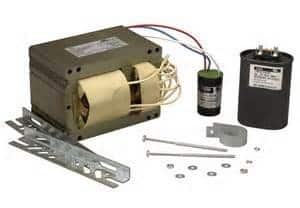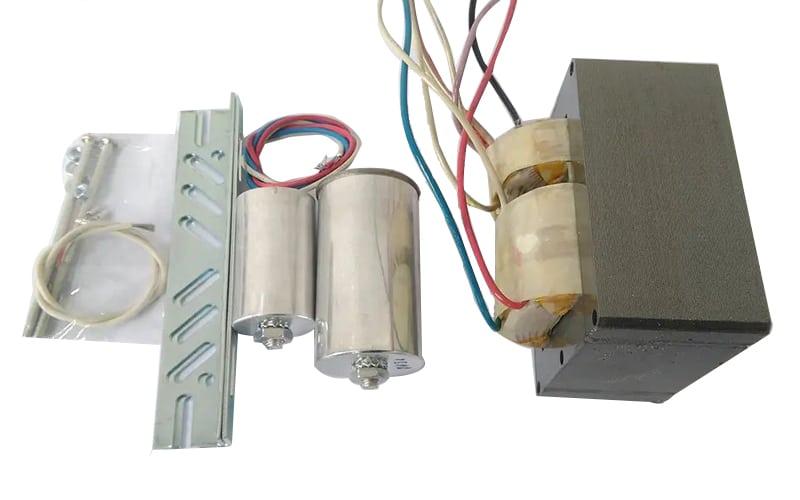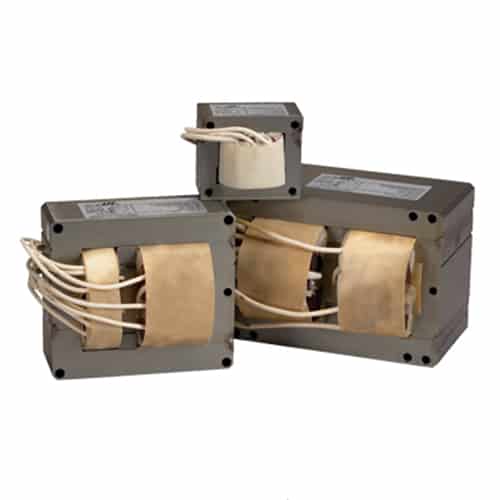600 watt HID ballasts for grow lights can operate nearly 600 watt high pressure sodium (HPS), metal halide (MH), Dual Arc, and Conversion grow lamps, based on their specifications. Digital (electronic) ballasts use circuitry in place of transformers, capacitors, and ignitors that traditional magnetic ballasts have.
Magnetic ballasts often run warmer than electronic ballasts, and they require slightly more power (approximately 5% more wattage) to drive the same wattage bulb as an electronic ballast, yet they are usually less costly in terms of upfront cost. Another added benefit of electronic ballasts is that they can often be dimmed down to less wattage e.g., a 600w ballast can be dimmed down to run 600w or 400w bulbs.
The pros of magnetic ballasts are attributed to the fact that this type of technology has passed the test of time.
Light manufacturers have all but perfected this technology, making it a very reliable choice for consumers. So reliable, in fact, that many manufacturers offer 5-year, 10-year, or even lifetime warranties on their products. Magnetic ballasts are also relatively easy to repair so even after a product’s warranty expires it is possible to repair a magnetic ballast for a minimal cost. There are a magnitude of magnetic ballast manufacturer, James Lighting is a 20 years China factory.
keeping the price point as low as possible for consumers. Because this technology has existed for so long and there is enough competition between suppliers there is no shortage of options available. A consumer can choose a low-cost magnetic ballast kit, a high-end magnetic ballast equipped with top-of-the-line components for a significantly higher price tag or anything in-between.
Electronic ballasts are ballasts that utilize electronic circuitry in place of the core/coil, capacitor, and igniter found in magnetic ballasts. The original electronic ballasts were specific to bulb type (MH or HPS), wattage, and voltage. They consisted of little more than a basic circuit board.
Since their inception, almost all electronic ballasts in the horticultural industry have been replaced by digital ballasts. Digital ballasts are a type of electronic ballast and their names are used interchangeably throughout the industry. There is, however, a distinction between digital and electronic ballasts. Digital ballasts are electronic ballasts equipped with a microprocessor that makes various options possible. Such as, digital ballasts are considered smart ballasts because they will differentiate between a high-pressure and a high-pressure sodium lamp.
The microprocessor can be programmed to monitor bulb performance and turned off the ballast when a lamp breakdown is sensed, eliminating continuous attempts to strike a malfunctioning bulb. Microprocessors make it possible to have dimmable, multi-voltage, and multi-wattage ballasts that will even, in some cases, alert the user to problems or any malfunctions.
Digital ballasts operate at a high frequency, in the 20,000-60,000 Hz range, which is much higher than the standard 60 Hz operation of magnetic ballasts. This higher frequency provides a increased level of efficiency for digital ballasts. In other words, more light is produced per unit of energy consumed.

The pros of the digital ballast are attributed to technological advancements, allowing for increased efficiency. Because of the way they operate (higher frequency) digital ballasts are more efficient at creating usable light in relation to the energy they consume. Digital ballasts are light weight, significantly smaller than magnetic ballasts and operate very quietly. They also tend to operate a bit cooler than most magnetic ballasts.
The digital ballast’s microprocessor allows for soft bulb start-up (a technique shown to increase the longevity of most HID lamps), monitoring of the lamp (which increases safety), and the ability to be interchangeable in terms of wattage, voltage, and bulb type.


